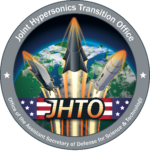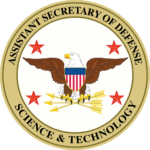Our goal is to create a strong workforce to meet future hypersonic research needs. If your company has open education opportunities that you would like to post here, please email ucah@tamu.edu with your information.
11-13 June, 2024
NSWC Dahlgren, VA
TARGET AUDIENCE: This course/brief is ideal for managers, engineers, scientists, high-level technicians and individuals with job functions that have to work with high-speed programs and technologies in any field.
COURSE DESCRIPTION: This three-day course will provide an introduction to the technical background of hypersonics. Participants will gain an understanding of how hypersonics is different from other flight regimes, and how they can apply their existing technical knowledge to hypersonics problems and the fields of related work.
This training includes the following topics:
Part 1: Basic Thermophysics and Definitions
Part 2: Introduction to Hypersonics
Part 3: Shock Waves – A Primer
Part 4: Shock Layers
Part 5: Surfaces in Hypersonic Flows
Part 6: Wakes and Wake Physics
Part 7: Controlling Hypersonic Flight
Part 8: Hypersonic Propulsion
Secret Clearance required for attendance.
Register no later than May 24, 2024 by emailing the JHTO Workforce Development Team at matthew.l.akers.ctr@us.navy.mil or jhto_wfd@us.navy.mil
St. Augustine, FL
Do you work in the hypersonics field? Do you need to know more about the materials and properties needed for extreme hypersonic environments?
ACerS has partnered with the U.S. Advanced Ceramics Association (USACA) to present a one-day short course on ultra-high temperature materials for hypersonic applications.
This short course will take place in conjunction with the 47th Annual Composites, Materials, & Structures Conference* in St. Augustine, Fla.
Even better – Registration for the short course is free for up to 75 conference registrants!
*Note that the course and conference will be in an ITAR compliant environment. See the website for citizenship and documentation requirements.
ABOUT MATERIALS FOR HYPERSONICS
The workforce development short course will introduce and train participants on the materials science and engineering of ultra-high temperature ceramic (UHTC) materials, ceramic matrix composites (including carbon-carbon composites), as well as some refractory metals to support the design and manufacturing sustainment. This session will be delivered in an ITAR compliant environment and is intended to benefit engineers, technicians, production operators, and quality assurance personnel along with supply chain vendors and subcontractors.
Topics covered include:
• History of hypersonic flight and design
• Hypersonic aerothermodynamics and hypersonic materials challenges
• Introduction to mechanical properties
• Thermal properties
• Applications of thermal and mechanical properties
• Composites including carbon/carbon and ceramic matrix composites and their manufacture
(will include some coverage of metals used in systems)
Participants will receive a full set of notes for the college course on which this short course is based.
University of Maryland, College Park
Context
This Summer School, the fourth following those in 2010, 2015, and 2018, will bring together graduate students and distinguished instructors from several different scientific disciplines to spend one week fully focused on the topic of turbulence. The Summer School is an opportunity for participants to develop a both deeper and broader appreciation and understanding of turbulence, and offers a unique opportunity for them to build their professional networks.
Instructors
- Gregory Bewley – Cornell University
- Christoph Brehm – University of Maryland
- Johan Larsson – University of Maryland
- Ellen Longmire – University of Minnesota
- Ugo Piomelli – Queen’s University
- Jacob Wenegrat – University of Maryland
Space-Time Coordinates
Applications
Hyatt Regency Orlando, Orlando, Florida
Instructed by Mr. Daniel Marren, Hypersonic T&E and University Engagement Lead at Test Resource Management Center (TRMC) and Joint Hypersonic Transition Office (JHTO).
8:00 AM – 5:00 PM on Sunday January 7, 2024, at the Hyatt Regency Orlando before the AIAA SciTech Forum
This unique Hypersonic Test and Evaluation short course is an offering that is meant to introduce students to high speed and hypersonic test. The course will introduce the concept of hypersonic flight and describe the critical physics that is encountered at this unique and formidable speed regime. It will briefly discuss the system benefits and uses for this flight regime and put in perspective, why system performance and evaluation through test for this important speed regime can create difficulties for the tester, test facility developer and project manager. Principals of test design for this unique flight regime will be discussed as well as descriptions and examples of the typical test capability types along with examples of each in the current ground test infrastructure.
Learning Objectives
- Be able to describe the fundamentals of hypersonic flight.
- Demonstrate familiarity with the various benefits of speed.
- Understand the history of hypersonic test.
- Differentiate between the disciplines and test capabilities used to evaluate high speed systems.
- Gain a better understanding of the salient physics challenges for providing a relevant environment.
- Know the Benefits and Shortfalls of test and test techniques to choose evaluation method wisely.
- Recognize and plan for evaluation of important concepts through test
Course Fees
Non-Member Rates– Early: $549
– Standard: $599
AIAA Member Rates
– Early: $449
– Standard: $499
AIAA Student Member Rates
– Early: $199
– Standard: $249
Overview
This searchable hypersonic graduate curriculum is password protected as per the guidance from JHTO. The password is uthypersonics.



